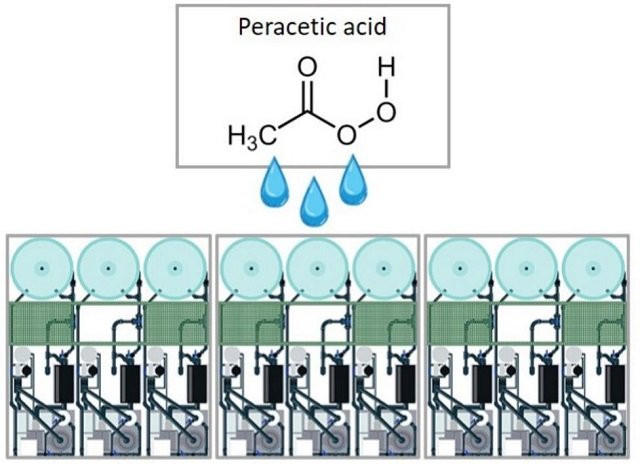
Microalgae are nature’s small powerhouses, capable of capturing carbon dioxide (CO2) and transforming it into valuable compounds. This makes them ideal candidates for mitigating climate change by sequestering CO2 from the atmosphere. However, low-light conditions can hinder their photosynthetic efficiency, limiting their CO2 capture potential.
A new study published in the scientific journal Environmental Research by scientists from Tianjin University (China) explores how certain plant hormones can help overcome this challenge. The researchers studied the effects of melatonin (MT) and indole-propionic acid (IPA) on the growth and CO2 fixation capacity of spirulina, a type of microalgae, under low-light conditions in a carbon capture and mass cultivation system (CAMC).
The Power of Phytohormones
Phytohormones, natural chemical signaling molecules, play a crucial role in regulating plant growth and development. Recent studies suggest that they may also influence the growth and metabolism of microalgae. By adding phytohormones to the CAMC system, the researchers aimed to enhance the ability of microalgae to thrive in low-light conditions and improve their CO2 capture efficiency.
The study found that adding MT and IPA to the microalgae culture significantly increased both biomass and CO2 fixation capacity. The group that received 10 mg/L of IPA achieved the best results, with a 17.11% increase in biomass and a 21.46% increase in CO2 fixation compared to the control group without phytohormones.
Multiple Benefits
The positive effects of MT and IPA extend beyond simply increasing CO2 capture. These phytohormones also:
- Enhanced chlorophyll synthesis: Increased chlorophyll production allows microalgae to capture more light energy, further boosting their growth.
- Improved stress tolerance: MT and IPA elevated the activity of enzymes such as superoxide dismutase (SOD), catalase (CAT), and glutathione reductase (GR). These enzymes act as antioxidants, helping microalgae cope with the stress of low-light environments.
- Promotion of extracellular polymeric substances (EPS) secretion: These substances form a protective layer around microalgae cells, shielding them from environmental challenges.
- Increased phycocyanin production: Phycocyanin is a valuable blue pigment found in spirulina. The study found that the 10 mg/L IPA group produced the highest levels of phycocyanin, with a 20.67% increase in content and a 46.67% increase in yield compared to the control.
- Improved carbohydrate and protein synthesis: Phytohormones stimulated the production of carbohydrates and proteins, further increasing the overall biomass of the microalgae.
A Promising Future for CO2 Capture
These findings demonstrate the promising potential of using phytohormones such as MT and IPA to enhance microalgae growth and CO2 fixation, particularly in low-light environments. This approach offers a valuable strategy for optimizing carbon capture systems using microalgae (CAMC) and maximizing their resource utilization capabilities.
Conclusion
This study highlights the significant impact of phytohormones on microalgae performance in low-light conditions. By improving photosynthetic activity, stress tolerance, and biomass accumulation, phytohormones can greatly enhance the efficiency of carbon capture and mass cultivation systems (CAMC).
Key research outcomes include:
- Enhanced growth and carbon fixation: MT and IPA effectively promoted microalgae growth and carbon fixation efficiency.
- Improved photosynthetic activity: Increased photosynthetic pigment content contributed to better CO2 utilization.
- Stress tolerance: Phytohormones stimulated microalgae resistance to low-light stress by boosting antioxidant enzyme activity and EPS production.
- Increased biomass yield: The study demonstrated a significant increase in biomass yield, driven by the redirection of carbon towards carbohydrate and protein synthesis.
These findings underscore the potential of phytohormones as a cost-effective and sustainable solution for optimizing microalgae-based carbon capture. By harnessing the power of phytohormones, we can improve the efficiency and productivity of CAMC systems, making them a more viable option for mitigating climate change and promoting a sustainable future.
Stay Always Informed
Join our communities to instantly receive the most important news, reports, and analysis from the aquaculture industry.
Further research is needed to explore the long-term effects of these phytohormones on microalgae cultures and investigate their suitability for large-scale CO2 capture applications. However, this study represents a significant step forward in harnessing the power of microalgae for a more sustainable future.
The study was funded by the Open Foundation of Collaborative Innovation Center for Wetland Conservation and Green Development of Hebei Province.
Contact
Chunfeng Song
Tianjin Key Laboratory of Indoor Air Environmental Quality Control, School of Environmental Science and Engineering, Tianjin University
92 Weijin Road, Nankai District, Tianjin, 300072, PR China
Email: chunfeng.song@tju.edu.cn
Reference (open access)
Li, P., Wang, D., Hou, Y., Hu, Z., & Song, C. (2024). Effect of phytohormones on the carbon sequestration performance of CO2 absorption-microalgae conversion system under low light restriction. Environmental Research, 262, 119984. https://doi.org/10.1016/j.envres.2024.119984
Editor at the digital magazine AquaHoy. He holds a degree in Aquaculture Biology from the National University of Santa (UNS) and a Master’s degree in Science and Innovation Management from the Polytechnic University of Valencia, with postgraduate diplomas in Business Innovation and Innovation Management. He possesses extensive experience in the aquaculture and fisheries sector, having led the Fisheries Innovation Unit of the National Program for Innovation in Fisheries and Aquaculture (PNIPA). He has served as a senior consultant in technology watch, an innovation project formulator and advisor, and a lecturer at UNS. He is a member of the Peruvian College of Biologists and was recognized by the World Aquaculture Society (WAS) in 2016 for his contribution to aquaculture.




